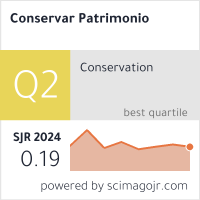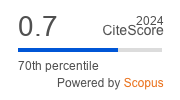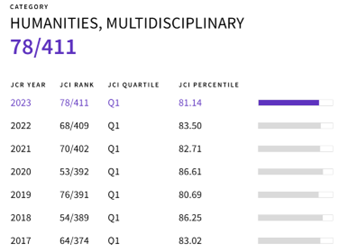Preparing the foundation for stable gilding: the origins of materials and practices – a review
DOI:
https://doi.org/10.14568/cp2018033Keywords:
Gesso grounds, Gypsum plaster, Lime plaster, Gilding, Ground layersAbstract
This paper is the fifth of a series and focuses on tracing the history of the use of gypsum based products as well as of the use of ground layers, centred on a review of published analytical evidence. The purpose is to contribute for the understanding of these long traditions which led to the choice of specific materials and practices used for producing gilding grounds in southern Europe. In fact, several practices and the raw material gypsum used in gilded surfaces do have an extremely long tradition, which can be traced back to the Pre-Pottery Neolithic B. The systematic use of these materials, especially the use of ground layers for decoration and other purposes, suggests not only an intention but also, somehow, the notion of a complex concept, the concept of a composite material, even at these very early periods, from which gilding origins. In addition, the particular case of Portugal shows that aspects such as religious, political, and sociocultural influences played a central role in the choice of gypsum as the raw material, which was curiously used exclusively for gilding.
Received: 2018-7-31
Revised: 2018-11-19
Accepted: 2018-12-1
Online: 2019-1-26
Publication: 2019-11-6
Downloads
References
[1] Pombo Cardoso, I.; Pye, E., ‘Gessoes in Portuguese Baroque gilding grounds. Part 1: a study of historical documentary sources’, Studies in Conservation 62(4) (2017) 185-209, http://dx.doi.org/10.1080/00393630.2015.1130774.
[2] Pombo Cardoso, I.; Pye, E., ‘Gessoes in Portuguese Baroque gilding grounds. Part 2: analytical study of historical samples and archaeological reconstructions’, Studies in Conservation 63(2) (2018) 72-96, http://dx.doi.org/10.1080/00393630.2016.1266430.
[3] Pombo Cardoso, I.; Pye, E., ‘Preparing the foundation for sta¬ble gilding: scientific evaluation of the durability of Baroque gesso gilding grounds’, Journal of Archaeological Science 79 (2017) 86-95, http://dx.doi.org/10.1016/j.jas.2017.01.014.
[4] Pombo Cardoso, I.; Pye, E., ‘Preparing the foundation for sta¬ble gilding: Baroque craftsmen’s empirical understanding of gesso gilding grounds’, Journal of Archaeological Science 79 (2017) 96-106, http://dx.doi.org/10.1016/j.jas.2017.01.015.
[5] Pombo Cardoso, I.; Sá, S, ‘The use of ground layers on gilded and polychrome surfaces. A Review’ (forthcoming).
[6] Kingery, W.; Vandiver, P.; Prickett, M., ‘The beginnings of pyrotechnology, Part II: production and use of lime and gypsum plaster in the pre pottery Neolithic Near East’, Journal of Field Archaeology 15(2) (1988) 219-244 https://doi.org/10.1179/009346988791974501.
[7] Rollefson, G. O., ‘The uses of plaster at neolithic ‘ain ghazal, Jordan’, Archaeomaterials 4 (1990) 33-54.
[8] Wirsching, F., ‘Calcium sulphate’, in Ullmann’s Encyclopedia of Industrial Chemistry, Wiley-VCH (2000), https://doi.org/10.1002/14356007.a04_555.
[9] West, R. R.; Sutton, W. J., ‘Thermography of gypsum’, Journal of American Ceramic Society 37(5) (1954) 221-224, https://doi.org/10.1111/j.1151-2916.1954.tb14027.x.
[10] Syndicat National des Industries du Plâtre, Le Plâtre. Physico- Chimie. Fabrication et Emplois, Eyrolles, Paris (1982).
[11] Chlouveraki, S., ‘Gypsum in Minoan architecture. Exploitation, utilisation and weathering of a prestige stone’, tese de doutoramento, University College London, London (2006).
[12] Sanz, D., ‘Análisis del yeso empleado en revestimientos exteriores mediante técnicas geológicas’, tese de doutoramento, Universidad Politécnica de Madrid, Madrid (2009), http://oa.upm.es/1711/ (acesso em 2019-1-25).
[13] Amathieu, L.; Boistelle, R., ‘Improvement of the mechanical properties of set plasters by means of four organic additives inducing {101} faces’, Journal of Crystal Growth, 79(1-3) (1986) 169-177, https://doi.org/10.1016/0022-0248(86)90432-X.
[14] Torraca, G., Materiaux de Construction Poreux, ICCROM, Rome (1986).
[15] Lewry, A.; Williamson, J., ‘The setting of gypsum plaster. Part II. The development of microstructure and strength’, Journal of Materials Science 29 (1994) 5524-5528, https://doi.org/10.1007/bf00349943.
[16] Finot, E.; Lesniewska,E.; Mutin, J.; Goudonnet, J., ‘Investigations of surface forces between gypsum microcrys¬tals in air using atomic force microscopy’, Langmuir 16 (2000) 4237-4244, https://doi.org/10.1021/la9902439.
[17] Gourdin, W. H.; Kingery, W. D., ‘The beginnings of pyro¬technology: Neolithic and Egyptian lime plaster’, Journal of Field Archaeology 2(1-2) (1975) 133-150, https://doi.org/10.1179/009346975791491277.
[18] Moorey, P. R. S., Ancient Mesopotamian Materials and Industries. The Archaeological Evidence, Clarendon Press, Oxford (1994).
[19] Ling, R., Stucco Work and Painting in Roman Italy, Ashgate, Aldershot (1999).
[20] Andrews, H., ‘Gypsum and anhydrite plasters’, National Building Studies Bulletin 6 (1948).
[21] Colonial Liaison Section of the Building Research Station, ‘The uses of gypsum and anhydrite in building’, Colonial Building Notes 33 (1955) 1-13.
[22] Karni, J.; Karni, E., ‘Gypsum in construction: origin and properties’, Materials and Structures 28 (1995) 92-100, https://doi.org/10.1007/bf02473176.
[23] Middendorf, B., ‘Physico-mechanical and microstructural characteristics of historic and restoration mortars based on gypsum: current knowledge and perspective’, in Natural Stone, Weathering Phenomena, Conservation Strategies and Case Studies, ed. S. Siegesmund, T. Weiss & A. Vollbrecht, The Geological Society, London (2002) 165-176, https://doi.org/10.1144/GSL.SP.2002.205.01.13.
[24] Thomson Jr, D.V., The Craftsman’s Handbook. “Il Libro dell’ Arte." Cenino d’Andrea Cennini, Dover Publications, New York (1933).
[25] Lucas, A.; Harris, J., Ancient Egyptian Materials and Industries, E. Arnold, London (1962).
[26] Forbes, R. J., Studies in Ancient Technology, 2nd ed., E. J. Brill, Leiden (1965).
[27] Vogel, D.; Follner, H.; Jacobi, H.; Kulke, H.; Brokmeier, H.-G., ‘Characterization and reproduction of historical gypsum plas¬ters and comparison with familiar modern preparations’, ZKG International 52(11) (1999) 640-648.
[28] Sanz, D., ‘Traditional gypsum kilns’, Recopar 5 (2005) 76-84, http://polired.upm.es/index.php/recopar/article/view/2186 (acesso em 2019-1-25).
[29] Murat, M.; Pusztaszeri, L.; Gremion, M., ‘Corrélations “tex¬ture cristalline-propriétés mécaniques” des plâtres durcis. Étude préliminaire’, Materials and Structures 8(5) (1975) 377-385, https://doi.org/10.1007/bf02479025.
[30] Belidor, B. F., La Science des Ingénieurs dans la Conduite des Travaux de Fortification et d’Architecture Civile, Paris (1729), http://gallica.bnf.fr/ark:/12148/bpt6k856819 (acesso em 2019-1-25).
[31] Rondelet, J., Traité Théorique et Pratique de l’Art de Bâtir, vol. 1, Paris (1802), https://gallica.bnf.fr/ark:/12148/bpt6k86635c (acesso em 2019-1-25).
[32] Machado de Castro, J. M., Dicionário de Escultura: Inéditos de História de Arte, Livraria Coelho, Lisboa (1937).
[33] Thuesen, I.; Leonardsen, E.; Rehhoff, L.; Akkermans, P., ‘Gypsum or calcite? A preliminary case study of Syrian plas¬ters’, Paléorient 16(2) (1990) 79-87, https://doi.org/10.3406/paleo.1990.4534.
[34] Goren,Y.; Goldberg, P., ‘Petrographic thin sections and the development of Neolithic plaster production in Northern Israel’, Journal of Field Archaeology 18(1) (1991) 131-140, https://doi.org/10.1179/009346991791548735.
[35] Goren, Y.; Segal, I.; Bar-Yosef, O., ‘Plaster artifacts and the interpretation of the Nahal Hemar Cave’, Journal of The Israel Prehistoric Society 25 (1993) 120-131.
[36] Hauptmann, A.; Yalcin, Ü., ‘Lime plaster, cement and the first puzzolanic reaction’, Paléorient 26(2) (2000) 61-68, https://doi.org/10.3406/paleo.2000.4710.
[37] Nissen, H., ‘The archaic texts from Uruk’, World Archaeology 17(3) (1986) 317-334, https://doi.org/10.1080/00438243.1986.9979973.
[38] Ghorab, H,; Ragai, J.; Antar, A., ‘Surface and bulk properties of ancient Egyptian mortars. Part I: X-ray diffraction studie’, Cement and Concrete Research 16 (1986) 813-822, https://doi. org/10.1016/0008-8846(86)90004-9.
[39] Regourd, M.; Kerisel, J.; Deletie, P.; Haguenauer, B., ‘Microstructure of mortars from three Egyptian pyramids’, Cement and Concrete Research 18 (1988) 81-90, https://doi.org/10.1016/0008-8846(88)90124-X.
[40] Klemm, D.; Klemm, R., ‘Mortar evolution in the Old Kingdom of Egypt’, in Archaeometry ‘90, ed. E. Pernicka & G. A. Wagner, Birkhäuser Verlag, Basel (1990) 445-455.
[41] Martinet, G., ‘Caracterisation des mortiers pharaoniques du temple d’Amon à Karnak’, Bulletin de Liaisons Laboratoires des Ponts et Chaussés 181 (1992) 39-45.
[42] Tsakiridis, P.; Toumbakari, E., ‘Characterisation of ancient gypsum mortars from the archaeological site of Amathus, Cyprus’, in Historic Mortars and RILEM TC 203-RHM Final Workshop, ed. J. Válek, C. Groot & J. J. Hughes, RILEM, Bagneux (2010) 373-380.
[43] Tucci, P., ‘Red-painted stones in Roman architecture’, American Journal of Archaeology 115(4) (2011) 589-610, https://doi.org/10.3764/aja.115.4.0589.
[44] Marzo, P., Alloza, R.; Iglesias, P., Recuenco, J. L., ‘Estudio arqueométrico de los morteros y materiales de construcción’, in Los Poblados del Bronce Final y Primera Edad del Hierro del Cabezo de la Cruz (La Muela, Zaragoza), ed. J. V. Picazo & J. M. Rodanés, Gobierno de Aragón, Zaragoza (2009) 331-343.
[45] Parras-Guijarro, D.; Montejo-Gámez, M.; Ramos-Martos, M.; Sánchez, A., ‘Analysis of pigments and coverings by X-ray diffraction (XRD) and micro Raman spectroscopy (MRS) in the cemetery of Tutugi (Galera, Granada, Spain) and the settlement convento 2 (Montemayor, Córdoba, Spain)’, Spectrochimica Acta. Part A: Molecular and Biomolecular Spectroscoy 64(5) (2006) 1133-1141, https://doi.org/10.1016/j.saa.2005.11.035.
[46] Gómez, M.; Vicente, J.; Martín, C.; Egido, M., Algueró, M., González, E.; Arteaga, A. Juanes, D., ‘Revisión y actualización de análisis de la policromía de la Dama de Baza. Comparación can la Dama de Elche’, Bienes Culturales. Revista del Instituto del Patrimonio Histórico Español 8 (2008) 211-222.
[47] Sanz, D., ‘Caracterización de los morteros del yacimiento islámico de los Casares (Riba de Saelices, Guadalajara)’, relatório, Universidad Politécnica de Madrid, Madrid (2002).
[48] Genestar, C.; Pons, C., ‘Ancient covering plaster mortars from several convents and Islamic and Gothic palaces in Palma de Mallorca (Spain). Analytical characterization’, Journal of Cultural Heritage 4 (2003) 291-298, https://doi.org/10.1016/j.culher.2003.02.001.
[49] Cardell-Fernández, C.; Navarrete-Aguilera, C., ‘Pigment and plas¬terwork analyses of Nasrid polychromed lacework stucco in the Alhambra (Granada, Spain)’, Studies in Conservation 51 (2006) 161-176, https://doi.org/10.1179/sic.2006.51.3.161.
[50] Romero-Pastor, J.; Duran, A.; Basilio, A., Van Grieken, R., Cardell, C., ‘Compositional and quantitative microtextural characterization of historic paintings by micro-X-ray diffrac¬tion and Raman microscopy’, Analytical Chemistry 83 (2011) 8420-8428, https://doi.org/10.1021/ac201159e.
[51] Oudbashi, O.; Shekofte, A., ‘Traditional methods of gypsum production in province of Khuzestan, southwest of Iran’, in HMC08, Historical Mortars Conference Characterization, Diagnosis, Conservation, Repair and Compatibility, LNEC, Lisboa (2008), https://www.researchgate.net/publication/236986738 (acesso em 2019-1-25).
[52] Kawiak, T., ‘Gypsum mortars from a twelfth-century church in Wislica, Poland’, Studies in Conservation 36 (1991) 142-150, https://doi.org/10.2307/1506419.
[53] Adams, J.; Kneller, W.; Dollimore, D., ‘Thermal analysis (TA) of lime and gypsum-based medieval mor-tars’, Thermochimica Acta 211 (1992) 93-106, https://doi.org/10.1016/0040-6031(92)87010-8.
[54] Capitan-Vallvey, L.; Manzano, E.; Medina Florez, V., ‘A study of the materials in the mural paintings at the ‘Corral del Carbon’ in Granada, Spain’, Studies in Conservation 39(2) (1994) 87-99, https://doi.org/10.1179/sic.1994.39.2.87.
[55] Middendorf, B.; Knofel, D., ‘Characterization of historic mortars from buildings in Germany and the Netherlands’, in Conservation of Historic Bricks Structures: Case Studies and Reports of Research, ed. N. S. Baer, S. Fitz & R. A. Livingston, Donhead, Shaftesbury (1998) 179-196.
[56] Middendorf, B.; Knofel, D., ‘Gypsum and lime mortars of his¬toric German brick buildings. Analytical results and restora¬tion material requirements’, in Conservation of Historic Bricks Structures: Case Studies and Reports of Research, ed. N. S. Baer, S. Fitz & R. A. Livingston, Donhead, Shaftesbury (1998) 197-208.
[57] Middendorf, B.; Knofel, D., ‘Water-resistant gypsum lime mortars for the restoration of historic brick buildings’, in Conservation of Historic Bricks Structures: Case Studies and Reports of Research, ed. N. S. Baer, S. Fitz & R. A. Livingston, Donhead, Shaftesbury (1998) 311-324.
[58] Villanueva, L., ‘Yesos tradicionales’, in Actas de la V Jornada de Aplicaciones Arquitectónicas de Materiales Compuestos y Aditivados, Madrid (1999).
[59] Colston, B.; Watt, D.; Goode, A., ‘Analysis of historic lime and gypsum floors – Part two’, Journal of Architectural Conservation 8(2) (2002) 47-68, https://doi.org/10.1080/13556207.2002.10785319.
[60] Fisher, H.; Vtorov, B., ‘Characterization of historical gypsum mortars’, ZKG International 55(5) (2002) 92-99.
[61] Lucas, G., ‘High-temperature gypsum plaster on historic exte¬riors? A plea for Gypsum’, ZKG International 56(08/09) (2003) 78-86.
[62] Lucas, G., ‘The special features of high-temperature gypsum mortar as a building material’, ZKG International 56(08/09) (2003) 54-65.
[63] Bustamante, R.; Sánchez de Rojas, M., ‘Study of plaster fin¬ishes on San Pedro de los Francos church at Calatayud’, Materiales de Construcción 57(286) (2007) 53-64, https://doi.org/10.3989/mc.2007.v57.i286.47.
[64] Lluveras, A.; Boularand,S.; Roqué, J.; Cotte, M.; Giráldez, P.; Vendrell-Saz, M., ‘Weathering of gilding decorations inves¬tigated by SR: development and distribution of calcium oxa¬lates in the case of Sant Benet de Bages (Barcelona, Spain)’, Applied Physics A 90(1) (2008) 23-33, https://doi.org/10.1007/s00339-007-4228-x.
[65] Vela, F.; Sanz, D.; López, S., ‘Survey and characterization of historical mortars of the church of San Pedro Apóstol in Polvoranca (Leganés, Madrid). Constructive aspects and petrological analysis’, in HMC08, Historical Mortars Conference Characterization, Diagnosis, Conservation, Repair and Compatibility, LNEC, Lisboa (2008), http://oa.upm.es/4233/ (acesso em 2019-1-25).
[66] Sanz, D.; Villanueva, L., ‘Albarracín y el Yeso Rojo’, Informes de la Construcción 56(493) (2004) 47-52, https://doi.org/10.3989/ic.2004.v56.i493.439.
[67] Sanz, D.; Villanueva, L., ‘Evolución de los morteros históricos de yeso al exterior en la España Central’, in Actas del Sexto Congreso Nacional de Historia de la Construcción, ed. S. Huerta, R. Marín, R. Soler & A. Zaragozá, vol. 2, Instituto Juan de Herrera, Madrid (2009) 1329-1336.
[68] Villanueva, L.; Mora, S. ; Sanz, D., ‘La construcción medieval y renacentista en las puertas del conjunto amurallado de Moya (Cuenca). Materiales históricos y técnicas Constructivas’, in Actas del IV Congreso Nacional de Historia de la Construcción, Instituto Juan de Herrera, Madrid (2005) 1115-1121.
[69] Levey, M., ‘Gypsum, salt and soda in ancient Mesopotamian chemical technology’, Isis 49(3) (1958) 336-342.
[70] Theophrastus, Theophrastus on Stones, trad. E.R. Caley & J.F.C. Richards, Ohio State University, Ohio (1956).
[71] Vitruvius, Ten Books on Architecture, trad. I. D. Rowland & T. N. Howe, Cambridge University Press, Cambridge (1999).
[72] Pliny, Pliny. Natural History, trad. H. Rackham, Heinemann, London (1952).
[73] Hakim, B.; ‘Julian of Ascalon’s treatise of construction and design rules from sixth-century Palestine’, Journal of the Society of Architectural Historians 60(1) (2001) 4-25, https://doi.org/10.2307/991676.
[74] Leoni, J., The Architecture of Leon Batista Alberti. In ten books. Of painting. In three books. And of statuary. In one book, London (1755).
[75] Cyril; S.; Gnudi, M.; Biringuccio, V., The pirotechnia (1540), Reprint of edition originally published in 1942, Basic Books, New York (1959).
[76] Bandy, M.; Bandy, J., Georgius Agricola: De Natura Fossilium, Dover Publications, New York (2004).
[77] Turriano, J., The Twenty-one Books of Engineering and Machines of Juanelo Turriano, trad. A. Keller, Doce Calles, Madrid (1996).
[78] Montamy, D. F., ‘Mémoire sur le stuc’, in Traité des Couleurs Pour la Peinture en Émail et sur la Porcelaine, Paris (1765) 200-210.
[79] Rodríguez-Navarro, C.; Hansen, E.; Ginell, W. S., ‘Calcium hydroxide crystal evolution upon aging of lime putty’, Journal of American Ceramic Society 81 (1998) 3032-3034, https://doi.org/10.1111/j.1151-2916.1998.tb02735.x.
[80] Ruiz-Agudo, E.; Rodríguez-Navarro, C., ‘Microstructure and rheology of lime putty’, Langmuir 16 (2010) 3868-3677, https://doi.org/10.1021/la903430z.
[81] Aguiar, J., Cor e Cidade Histórica. Estudos Cromáticos e Conservação do Património, FAUP, Porto (2002).
[82] Cotrim, H., ‘Reabilitação de estuques antigos’, tese de mestrado, Instituto Superior Técnico, Lisboa (2005).
[83] Silveira, P. M.; Veiga, M. R.; Brito, J., ‘Gypsum coatings in ancient buildings’, Construction and Building Materials 21 (2007) 126-131, https://doi.org/10.1016/j.conbuildmat.2005.06.035.
[84] Freire, T.; Santos Silva, A.; Veiga, R., ‘Caracterização de reves¬timentos interiores antigos portugueses’, in HMC08, Historical Mortars Conference Characterization, Diagnosis, Conservation, Repair and Compatibility, LNEC, Lisboa (2008), https://www.researchgate.net/publication/271072546 (acesso em 2019-1-25).
[85] Santos Silva, A.; Veiga, R.; Adriano, P.; Magalhães, A.; Pires, J.; Carvalho, A.; Cruz, A. J.; Mirão, J.; Candeias, A., ‘Characterization of historical mortars from Alentejo’s reli¬gious buildings’, International Journal of Architectural Heritage 4(2) (2010) 138-154, https://doi.org/10.1080/15583050903046322.
[86] Afonso, L. U., ‘De rotunda a charola: a etapa manuelina’, in A Charola do Convento de Cristo: História e Restauro, ed. A.C. Dias & I. Frazão, DGPC, Lisboa (2014) 70-159.
[87] Bluteau, D.R., Vocabulario Portuguez e Latino, Collegio Artes Companhia de Jesus, Coimbra (1713), http://purl.pt/13969.
[88] Oliveira, V., Advertências aos Modernos que Aprendem os Officios de Pedreiro e Carpinteiro, Officina de Antonio da Sylva, Lisboa (1748).
[89] Sales, A. J., ‘Dicionário do comércio’, manuscrito, Biblioteca Nacional de Portugal, Lisboa (1759), http://purl.pt/13945.
[90] Machado, C. V., Collecção de Memorias Relativas às Vidas dos Pintores, Esculptores, Architectos e Gravadores Portuguezes, Lisboa (1823).
[91] Correia, V., Regimentos dos Oficiais Mecânicos da Mui Nobre e Sempre Leal Cidade de Lisboa (1572), Imprensa da Universidade, Coimbra (1926).
[92] Langhans, F., As Corporações dos Ofícios Mecânicos. Subsídios para a sua História, Imprensa Nacional de Lisboa, Lisboa (1943).
[93] Langhans, F., As Corporações dos Ofícios Mecânicos. Subsídios para a sua História, Imprensa Nacional de Lisboa, Lisboa (1946).
[94] Segurado, J. E., Acabamentos das Construções, Livraria Aillaud e Bertrand, Lisboa (1900).
[95] Vieira, E., ‘Técnicas tradicionais de fingidos e de estuques no norte de Portugal. Contributos para o seu estudo e conservação’, tese de mestrado, Universidade de Évora, Évora (2002).
[96] Silva, H. T., ‘Giovanni Grossi e a evolução dos estuques decorativos no Portugal setecentista’, tese de mestrado, Universidade de Lisboa, Lisboa (2005).

Downloads
Published
How to Cite
Issue
Section
Categories
License
This work is distributed under a Creative Commons Attribution License (CC BY-NC-ND 4.0) which permits use, distribution, and reproduction in any medium following no commercial or derivatives, provided the original author and source are credited.
Copyright remains with the authors.






